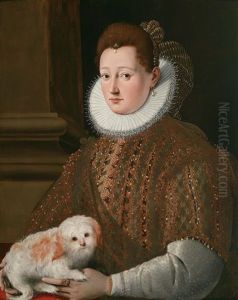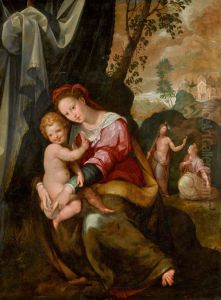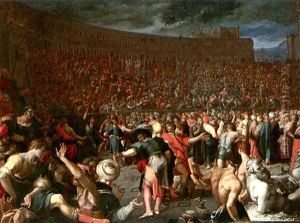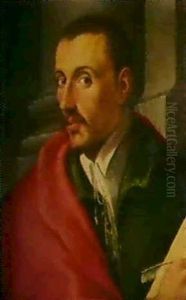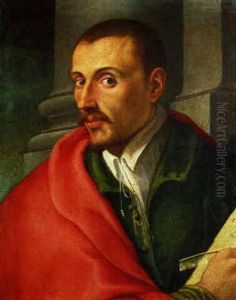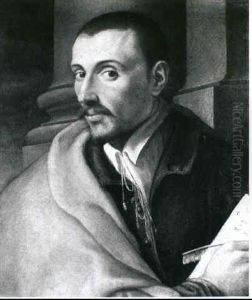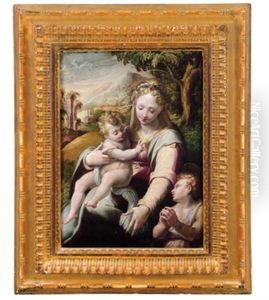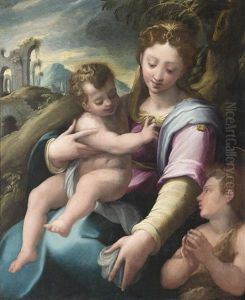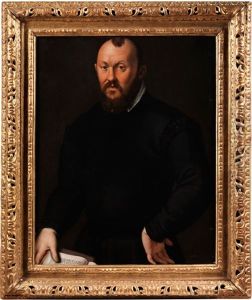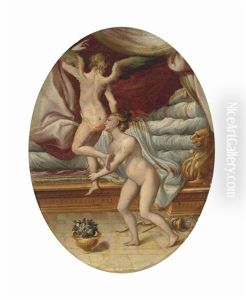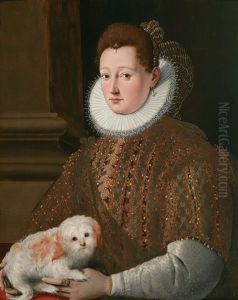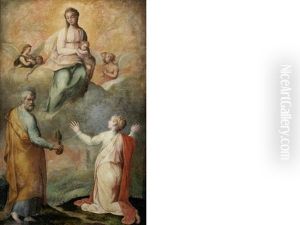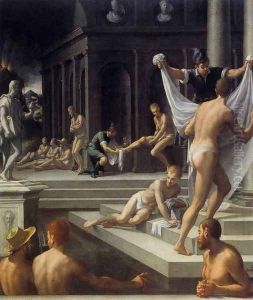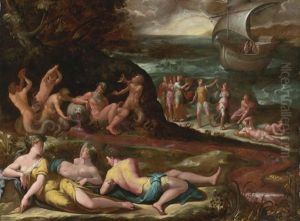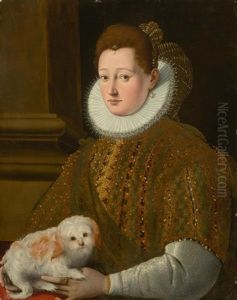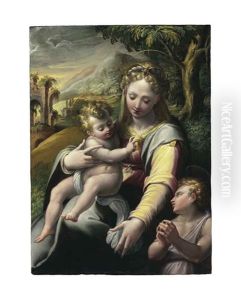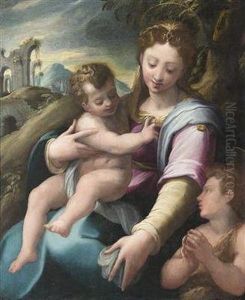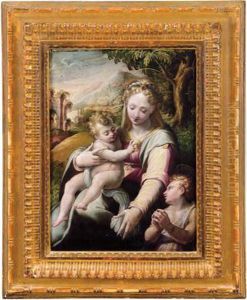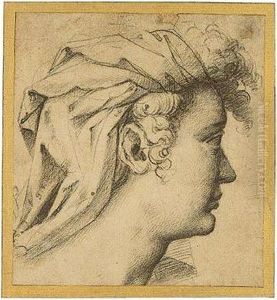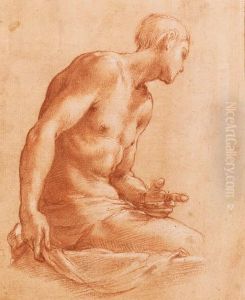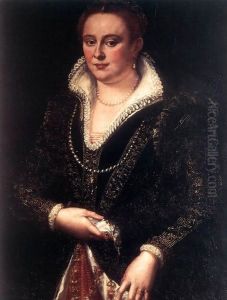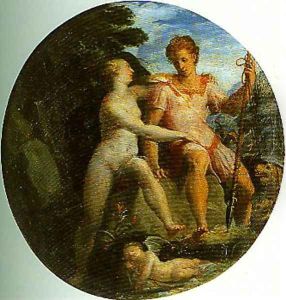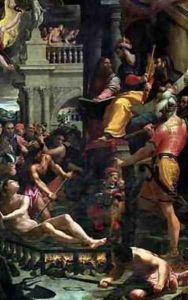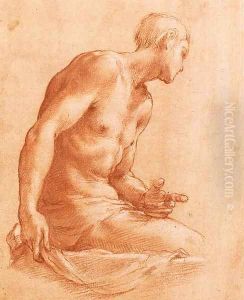Girolamo Del Crocifissaio (see Macchietti) Paintings
Girolamo Del Crocifissaio, also known as Girolamo Macchietti, was an Italian painter of the Renaissance period, born in 1535 and passing away in 1592. His work is often associated with the Florentine School, a group of artists known for their intricate approach to color, detail, and religious themes, under the larger umbrella of the Renaissance movement that sought to revive the art and culture of classical antiquity. Despite not being as widely recognized as contemporaries such as Michelangelo or Leonardo da Vinci, Del Crocifissaio contributed significantly to the richness of Renaissance art, particularly in Florence.
Del Crocifissaio's early life is somewhat obscured by the lack of comprehensive historical records, but it is known that he was deeply influenced by the prevailing artistic currents in Florence. He was likely trained under the guidance of prominent artists of the time, which was common practice for aspiring painters. His nickname, 'Del Crocifissaio,' hints at a specialization or a significant work depicting the crucifixion, a common and powerful theme in Renaissance art. This moniker differentiates him from other artists and underscores his identity within the Florentine art community.
His oeuvre includes religious frescoes, altarpieces, and possibly portrait work, although much of his art has either been lost or remains unidentified as his due to the common practice of not signing works during that era. The themes of Del Crocifissaio's paintings often revolve around biblical narratives, imbued with the humanist ideals of the Renaissance, which emphasized human potential and the importance of individual expression within the framework of religious devotion.
Del Crocifissaio’s style is characterized by its vibrant color palette, attention to detail, and the emotional intensity of the figures depicted. He was adept at using light and shadow to create depth and drama, a technique that was becoming increasingly popular among Renaissance artists. His work reflects the transition from the more rigid and symbolic medieval art to the more naturalistic and human-focused art of the Renaissance.
Despite his contributions to the Florentine Renaissance, Girolamo Del Crocifissaio remains a somewhat elusive figure, with much of his life and work still shrouded in mystery. Nonetheless, his existing paintings continue to be studied and admired for their beauty and historical significance, offering insights into the rich tapestry of Renaissance art and the myriad of artists who contributed to its legacy.
